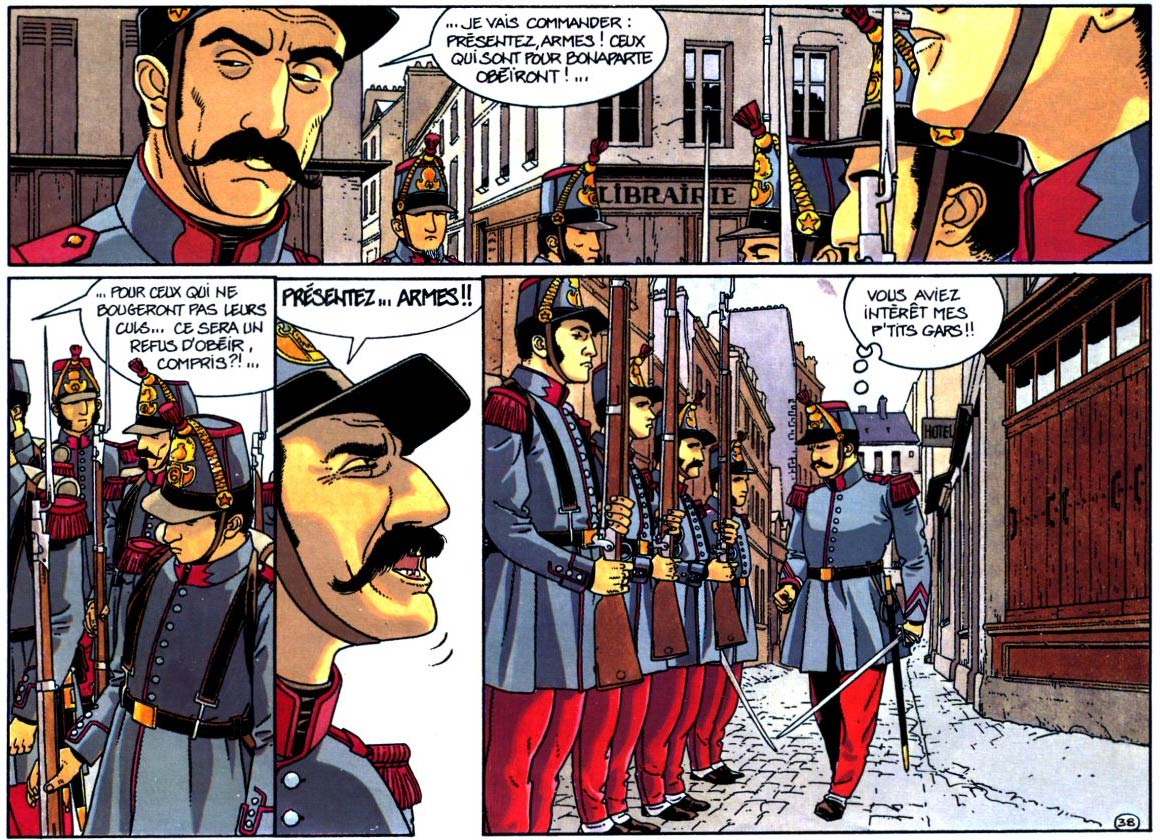'Tramp' #1 - 'Le Piège'. Dutch-language version.
Patrick Jusseaume was a French comic artist from Rouen, who specialized in historical comic series. Initially largely inspired by the style of André Juillard, he was the co-creator of such series as 'Chronique de la Maison le Quéant' (Glénat, 1985-1991) with Daniel Bardet and 'Tramp' (Dargaud, 1993-2017) with Jean-Charles Kraehn.
'Chronique de la Maison Le Quéant' #3 - 'Les Fils Du Chélif'.
Early life and career
Patrick Jusseaume was born in 1951 in Abidjan, the largest city of Ivory Coast, at that time a French colony. He settled in Rouen, the capital of Normandy, in 1971, and graduated from the local School of Fine Arts. He spent the early years of his working life as a drawing teacher. He produced his first professional artwork for the publishing house ID Program in 1982, and made his debut as a comic artist in 1985. He was present in the first issues of Vécu, a comic magazine dedicated to historical comics published by Éditions Glénat.
Chronique de la Maison le Quéant
Jusseaume teamed up with writer Daniel Bardet with whom he created a couple of short stories, but most notably the series 'Chronique de la Maison le Quéant'. The series chronicles the life of the young Baptiste Le Quéant around the revolutionary year 1848 and the French conquest of Algeria. The initial cycle of six stories was published in Vécu between 1985 and 1990 and published in book format by Glénat from 1986 to 1991. Bardet made a seventh installment with artist Bernard Puchulu in 1997.
'Chronique de La Maison Le Quéant' #6 - 'Rubicon'.
Je Bouquine
By 1990, Jusseaume had begun a collaboration with the magazine Je Bouquine, for which he illustrated classic literary tales like 'Tristan and Iseult', Andrée Chedid's 'Le Sixième Jour' and Oscar Wilde's 'The Picture of Dorian Gray'.
Tramp
In 1991, Jusseaume began his collaboration with Jean-Charles Kraehn for what would become his best-known series, 'Tramp'. This maritime thriller starts off in 1950, when the young captain Yann Calec is given command of the old tramp Belle Hélène. What he doesn't know is that the ship owner wants to sink the vessel in order to rake in the insurance money. Calec is caught in the middle of this scam, which will haunt him throughout the series. Between 1993 and 2012, Jusseaume and Kraehn collaborated on 10 albums, published by Dargaud. An eleventh installment followed in 2017. Because of the artist's illness, the final pages of this album were drawn by Kraehn himself.
Endpaper for Tramp #7 - 'Escale dans le Passé'.
Graphic contributions
Patrick Jusseaume has additionally contributed to several collective album projects, such as 'La Révolution enfin!' (Glénat, 1989) and books with comic adaptations of songs by Georges Brassens (Vents d'Ouest, 1990) and Boris Vian (Petit à Petit, 1997).
Other comics
With Pierre Wachs, Gine and Denis Falque, Jusseaume provided the artwork for the fourth album in Didier Convard's esoteric thriller series 'Le Triangle Secret' (Glénat, 2001), which questions the origins and classical teachings of Christianity. Jusseaume and Falque additionally provided the artwork for the first book of the third cycle of Convard's epic series, 'Les Gardiens du Sang', in 2009.
'Tramp' #9 - 'Le Trésor du Tonkin'.
Mission Viêtnam
In 2003, Jusseaume traveled to Vietnam with Jean-Charles Kraehn and scriptwriter Serge Le Tendre to prepare 'Mission Viêtnam' (Glénat, 2003), a travel diary by commission of a humanitarian association.
Death
Patrick Jusseaume passed away in October 2017 after a long illness, shortly before his 66th birthday. In his obituary, his publisher praised him for his "elegant and realistic Clear Line", and for his "perfect mastering of découpage and coloring".
Books about Patrick Jusseaume
The publishing house Petit à Petit released a monograph dedicated to Jusseaume in 1999 under the title 'Tramp, Sur Le Pont Avec Jusseaume', with texts by Olivier Cassiau.
Patrick Jusseaume in 1999. Photo: Jean Marie Thuillier (Paris-Normandie).








